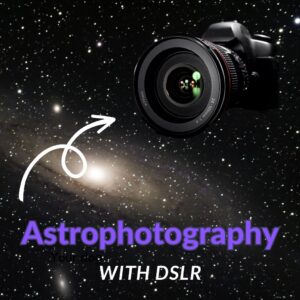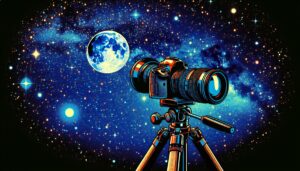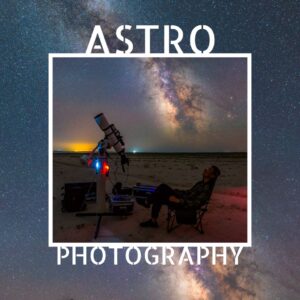This site contains affiliate links to products. I may receive a commission for purchases made through these links.
If you want to try astrophotography and already own a DSLR camera with the lens, you may ask yourself if it is worth upgrading to a telescope. Telescope vs. camera lens is a common question of beginners in astrophotography, so let me explain the difference.
A telescope is very similar to a camera lens. The telescope has a fixed focal ratio, and with few exceptions, it ranges from F4 up to F15. Camera lenses have a focal ratio from less than F2 to more than F32. The image quality for astrophotography is better with a telescope than with a camera lens. Also, you can get a more accurate focus with a telescope than a camera lens.
The camera lens is mostly used in wide-field astrophotography of the night sky, and the telescope is used for imaging deep-sky objects like nebulae and galaxies.
Pros and cons of telescope lenses
Pros of telescope lenses:
- made for astrophotography
- high magnification
- better image quality
- big aperture
- long focal length
- can be used for visual astronomy
- can be used with different filters
- very accurate focus
Cons of telescope lenses:
- can be big and heavy
- expensive accessories
- needs a sturdy computerized mount
Pros and cons of camera lenses
Pros of camera lenses:
- small and compact
- cheap
- build-in field flattener
- zoom feature
- adjustable aperture
- perfect for wide-field images of the Milky Way
- can be used for daytime photography
- most people already own one
Cons of camera lenses:
- hard to focus
- low magnification
- can’t photograph planets
- comatic aberration
- problem with filters
Telescope or Camera lens for astrophotography?
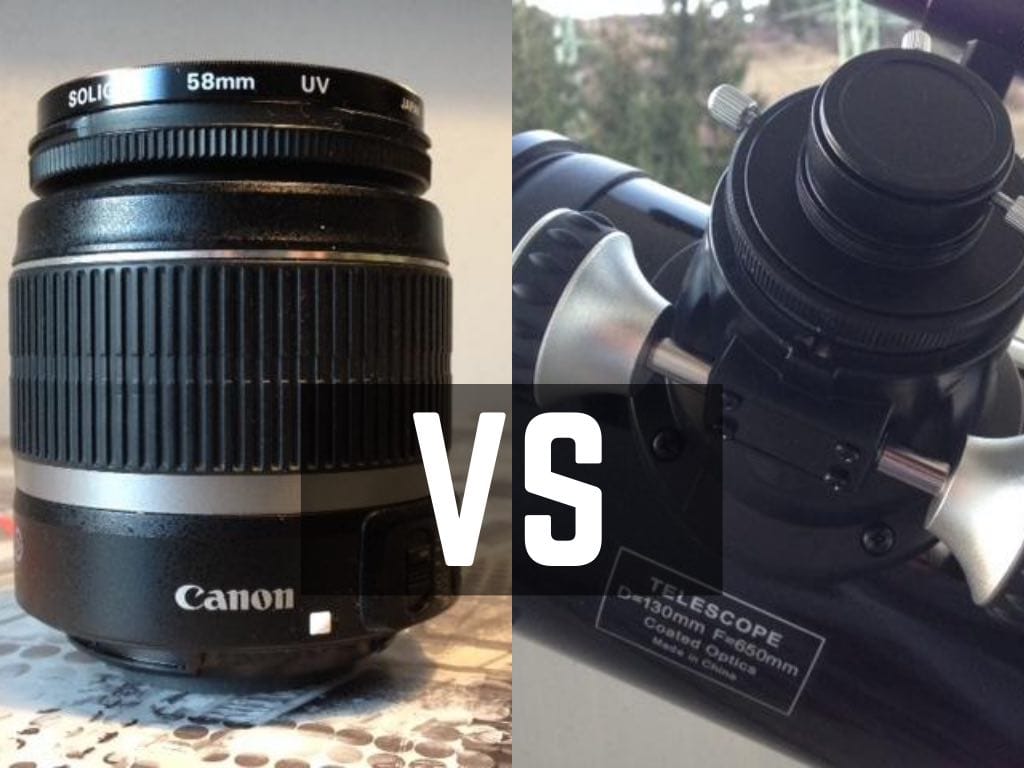
If you already own a DSLR with any lens and you want to try astrophotography, then you should try it first with what you have. You don’t need to buy a telescope straight away.
You can do pretty well with the basic camera lens, and because astrophotography is not only about the equipment, you will learn a lot. It will help you when you switch to an astrophotography telescope later.
You will get familiar with taking all the calibration frames, you will master the stacking software for deep-sky objects, and you will learn a lot about astrophotography in general. It is an expensive and complicated hobby, so it is a good idea to dive in slowly.
However, if you have a budget for a telescope and love astronomy, then go ahead and buy a telescope because you will get much better results. You can also use it for visual astronomy.
You can check my article about the best telescope for astrophotography to decide which telescope to buy.
Telescope vs. Telephoto Lens
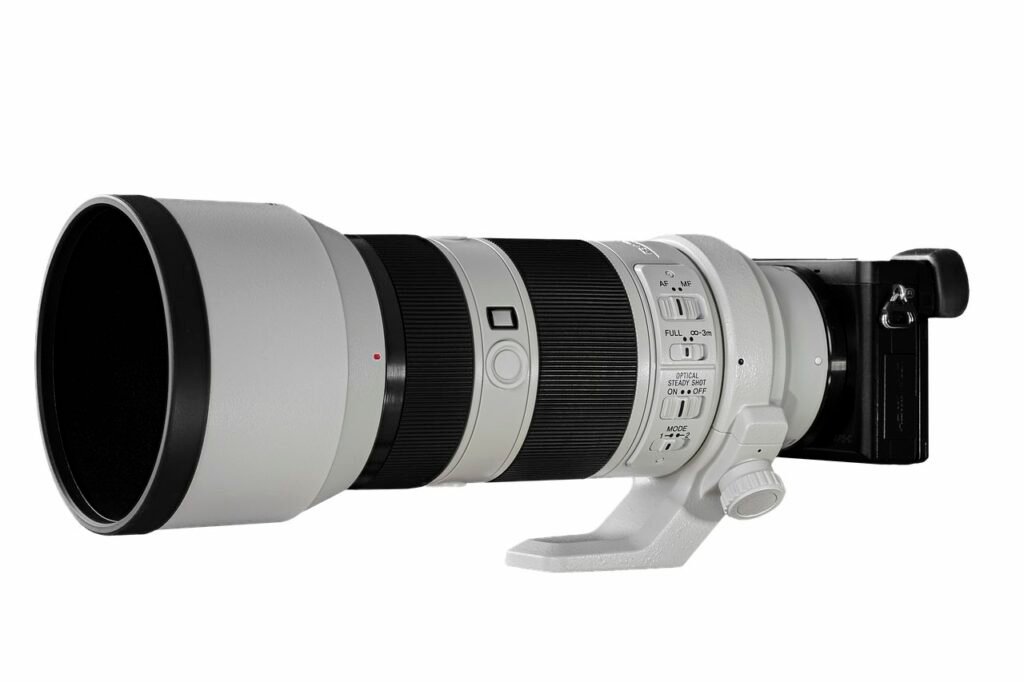
There are a few types of lenses, like a wide-angle lens, prime lens, zoom lens, macro lens, and standard lens, but the closest you can get to a telescope performance is the telephoto lens.
The telephoto lens has a longer focal length than a standard lens. For example, the Super Telephoto lens goes over 300 mm. The telephoto lens body is shorter than its focal length, something like Schmidt Cassegrain telescope design.
The downside of the telephoto lens is that it can be more expensive than a telescope. So if you already have one, cool, you can use it. But if you are asking me what to buy for astrophotography, a telescope, or a telephoto lens, then the answer is easy. Buy a telescope.
If you have one, you should start with a telephoto lens because the experience and results will be closer to a telescope experience than any other type of lens.
You can watch Trevor’s video from Astrobackyard to see what you can do with a telephoto lens here:
Telescope vs. Camera Lens For Planets
The problem with lenses and it doesn’t matter what type, is that it is almost impossible to do planetary imaging. Planets are very small, and to photograph even the biggest, like Jupiter or Saturn, you need high magnification, which means a very long focal length.
It is simply not possible with camera lenses. So, if you are interested in planetary imaging or shooting close-ups of the moon craters, you definitely need a telescope. And not a small one. The best option for planetary imaging is the Schmidt-Cassegrain telescope.
But using the Barlow lens is also possible with shorter focal lengths telescopes.
Motorized Mounts For Telescope and DSLR Camera
No matter what you plan to use for astrophotography, telescope, or camera, you need a motorized mount. A motorized mount compensates for the earth’s rotation, so you can take long exposures essential in astrophotography.
The design of the mount you need is called the equatorial mount. There are also alt azimuth computerized mounts, but they are not suited for astrophotography.
Mount For a Telescope
The German equatorial mounts for astrophotography start at around $700. You can check my article about the best telescope mount for astrophotography. The widely used mount for beginners is Celestron Advanced VX Computerized Mount. You can find it on Amazon or any telescope retailer.
Mount For a Camera
In recent years the market has skyrocketed with star trackers for DSLR cameras. Now you can choose from different brands that manufacture mounts dedicated to DSLR cameras and small refractors.
These mounts are small and compact, perfect for travel and camping trips under the dark skies. One of these mounts is iOptron SkyGuider Pro Camera Mount with iPolar Electronic Polar Finder. An excellent mount for your DSLR with just a lens.
The 500 Rule – No computerized mount, only tripod and camera
But what if you have only a camera with a lens and a tripod? Can you still try astrophotography if you don’t have a star tracker? Yes, you can!
To take a long exposure with your camera on a static tripod, you need to know the exposure limit where you start getting star trails. To calculate that, you can use the 500 rule.
This rule is more of a guideline; you should experiment with the exposure to see what you can do.
To calculate the 500 rule, you have to use this equation:
500 / (CF x FL)=SS
SS – shutter speed or exposure time
CF – crop factor of the camera sensor
FL – focal length of the lens
So for a camera like Canon T3i that I’m using a lot, the maximum exposure time with 50mm focal length lens is as follows:
500/(1.6×50)= 6.25 seconds
This tells me that I can shoot a maximum exposure of 6.25 seconds on a fixed tripod without getting star trails. But it is more a rule of thumb than a rule set in stone. It’s only a guide, and the real-world results may warry.
Read also: Can You Take a Picture With Your Phone Through a Telescope?
Conclusion
As you can see, you can use a camera lens for astrophotography if you don’t own a telescope yet. You can try it and learn just with the camera and lens, but if you are serious about astrophotography, you have to upgrade to a telescope at some point.
To take images of deep-sky objects, you need a telescope. But if you are only into wide-field photography of the Milky Way over the landscape, you can stick to a camera lens because the camera lens is a better option, and you don’t need a telescope for that.
Don’t forget to subscribe to our newsletter where you’ll find the latest cosmic discoveries, expert stargazing tips, and exclusive subscriber deals. Embark on your cosmic journey if you haven’t already!
Read also:




